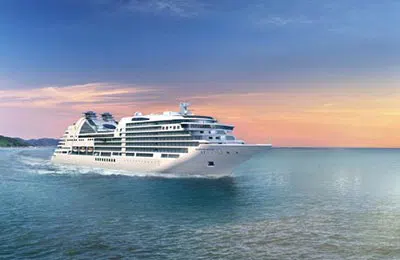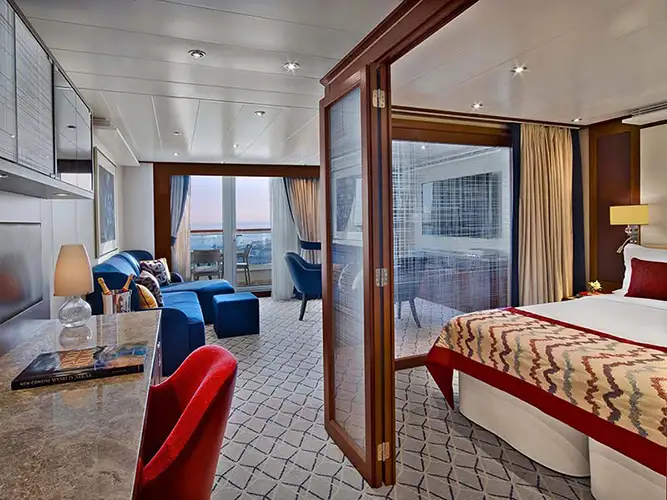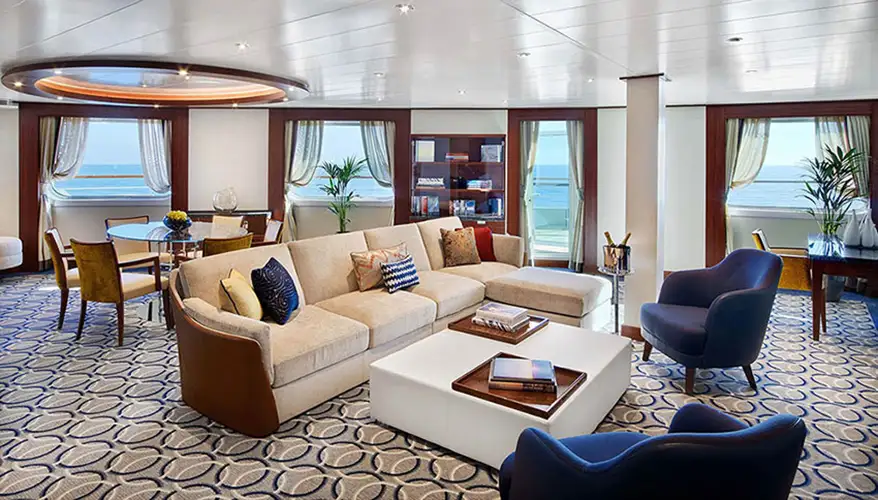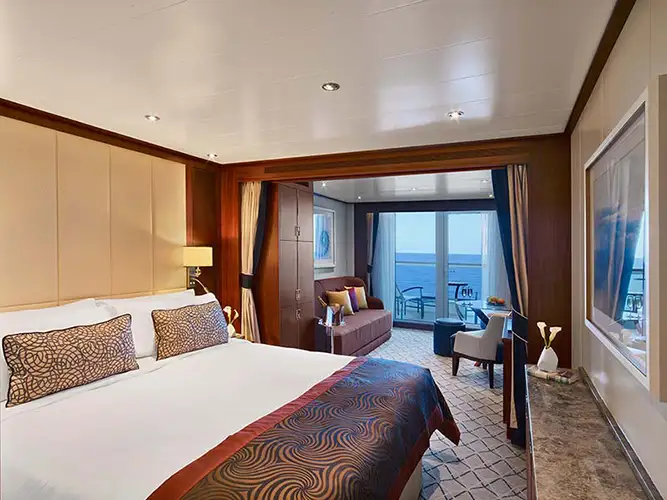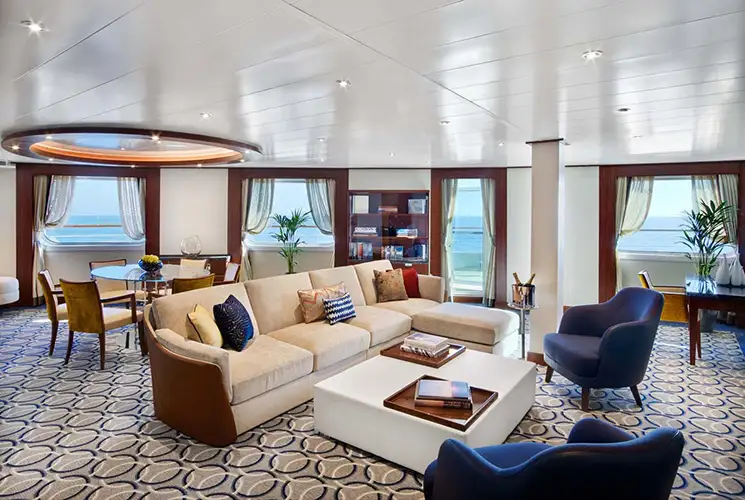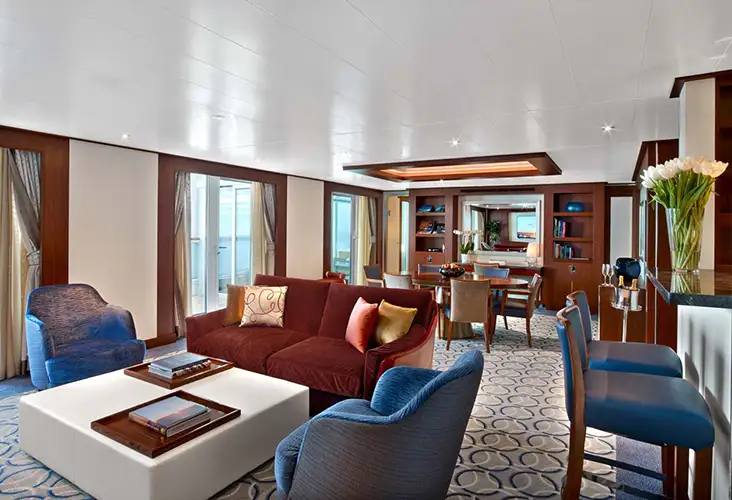Seabourn Mediterranean: 21 nights from Istanbul with Seabourn Ovation
Aug 21, 2027
Turkey, Greece, Italy, Montenegro, Croatia, Slovenia
Cruise itinerary
Departure Port: Istanbul ➞
Landing: Dubrovnik
-
Saturday, August 21, 2027 - 5:00 PMIstanbul
-
Sunday, August 22, 2027 8:00 AM - 5:00 PMCanakkale
-
Monday, August 23, 2027 8:00 AM - 6:00 PMVolos
-
Tuesday, August 24, 2027Navigation
-
Wednesday, August 25, 2027 7:00 AM - 10:00 PMPatmos
-
Thursday, August 26, 2027 8:00 AM - 6:00 PMRhodes
-
Friday, August 27, 2027 7:00 AM - 6:00 PMSantorini
-
Saturday, August 28, 2027 7:00 AM - 5:00 PMAthens
-
Sunday, August 29, 2027Navigation
-
Monday, August 30, 2027Navigation
-
Tuesday, August 31, 2027 8:00 AM - 5:00 PMItea
-
Wednesday, September 1, 2027 9:00 AM - 6:00 PMKorfu
-
Thursday, September 2, 2027 8:00 AM - 6:00 PMBrindisi
-
Friday, September 3, 2027 8:00 AM - 6:00 PMKotor
-
Saturday, September 4, 2027 7:00 AM - 5:00 PMDubrovnik
-
Sunday, September 5, 2027Navigation
-
Monday, September 6, 2027 8:00 AM - 6:00 PMKoper
-
Tuesday, September 7, 2027 8:00 AM - 6:00 PMRijeka
-
Wednesday, September 8, 2027 8:00 AM - 6:00 PMZadar
-
Thursday, September 9, 2027Navigation
-
Friday, September 10, 2027 8:00 AM - 6:00 PMKotor
-
Saturday, September 11, 2027 7:00 AMDubrovnik
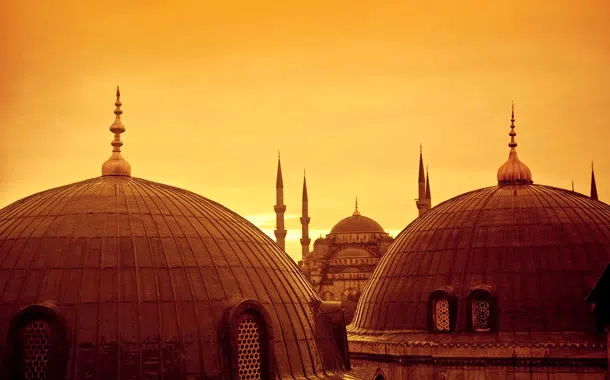
Istanbul
An incredible city, huge, vibrant like few others in the world. Where two continents meet, culture and diversity thrive in a unique architectural setting. Istanbul is hot,and we aren’t talking about the weather. These days there are more restaurants,bars,galleries and clubs around the city than Ottoman mosques(which is not a small feat).
The international fashion and design press has talked about Istanbul to the point of exhaustion; the sense of age that fell over the city once the Ottoman empire disappeared, has been replaced by a sense of energy and innovation not seen since the times of Suleiman the Magnificent.
Canakkale
Volos
Volos is a town located in the center of mainland Greece, about 326 km north of Athens and 215 km south of Thessaloniki, the second most important city. Built at the deepest point of the Pagasean Gulf and at the foot of Mount Pelion, Volos is a large port city that enjoys a mild Mediterranean climate with rather humid summers and mild winters.
Built at the deepest point of the Gulf of Pagaseo and at the foot of Mount Pelion, Volos is located on the Pelion peninsula in central Greece.
The etymology of the name " Volos ", according to a historical version, is the result of the distortion of the name of the Mycenaean city of Iolkos, where Jason set off with his Argonauts and his ship Argo in search of the Golden Fleece.
Volos is one of the oldest port cities in Greece. Capital of the province of Magnesia, the city belongs to the central region of Thessaly, its only outlet to the sea. It is located on the inner part of the mouth of the Gulf of Pagaseo, at the foot of the mythical Mount Pelion, the legendary country of the centaurs, as mythology tells.
Volos represents the ideal base to discover not only the picturesque mountain villages but also the Sporades islands of Skiathos, Skopelos, and Alonissos, connected by ferries. The city owes its current economic boom and its development to maritime trade, to the industries established in the area, and to the increase in tourism.
Volos is a relatively new city, it began to develop in the mid-19th century in the place where a small Turkish village previously resided. After its annexation to Greece from the Ottoman Empire, in 1881, it grew very rapidly in the following 40 years. In the 1920s there was a large influx of refugees. Merchants, entrepreneurs, artisans, and sailors went to live in Volos and the surrounding areas.
The development of the city has been closely linked to the creation of industrial areas, the restructuring of the port and the increase in tourism thanks to its geographical position, near Mount Pelion, and the fabulous beaches of Magnesia, especially those located in the Sporades.
The city is also known for its variety of " mezedes ", mixed appetizer dishes based on fish or seafood, served with a traditional alcoholic beverage called "Tsipouro".
Patmos

Rhodes
Ancient Charms and Aegean Sails from Rhodes!Embark on a captivating cruise from Rhodes, Greece, the largest of the Dodecanese islands, steeped in ancient history and medieval charm. From its impressive Old Town, a UNESCO World Heritage site, to its beautiful beaches, Rhodes offers a magical departure point for exploring the Aegean Sea. Immerse yourself in its legendary past before setting sail on a journey filled with sun-drenched islands, historical treasures, and serene sea days.
Rhodes is the 3rd largest island in Greece. Its geographical location and beauty have long been a target for many empires. Considered one of the most important centers of ancient Greece, this locality was frequented by wealthy Romans. In the Middle Ages, the city came under the dominion of the Knights of Malta and was later occupied by the Ottomans. Thus, Rhodes is known both for the variety of landscapes and the richness of its historical architecture. The old city, thanks to its imposing fortifications, makes it one of the largest inhabited medieval cities in Europe. The metropolis is divided into three areas. The modern and cosmopolitan city, with its hotels and buildings. The ancient one, built in 408 BC, later restored and where the ruins of the Temple of Zeus, Athena, and Apollo, the stadium, the gymnasium, and the theater are located. Finally, the one characterized by medieval Gothic architecture, built during the Ottoman period. Not to mention the Grand Masters Palace, home to ancient mosaics and a collection of Western-style furniture. Rhodes is the sunniest in Europe, with 300 days of sunshine a year. You will find both modern comfort and vintage style. You can also appreciate the warm hospitality of its people and the traditions that are still alive. After visiting the city, you will notice its beautiful beaches, some of which are equipped for water sports.

Santorini
Santorini is a small circular archipelago of volcanic islands located in the southern Aegean Sea, about 200 km southeast of mainland Greece.
Santorini is located in the southern part of the Cyclades.Its special geological configuration gives a spectacular, wild and unique beauty, becoming one of the main tourist destinations in Europe.
The current crescent shape of Santorini is a consequence of the enormous volcanic explosion that destroyed much of the island causing the formation of the caldera present on the territory, inside which form a series of wonderful small islands.
The island is a sanctuary of peace and calm, an idyllic corner where tourists from all over the world enjoy a few moments of pleasant relaxation. However, the quiet Santorini is, at the same time, one of the most suggestive and festive places in Greece. The square in the center of Fira and the beaches of Kamari, Perivolos and Perissa are the most lively and fashionable places.
The volcanic beaches of Santorini are not the best known in Greece, but they stand out for their diversity, their unique charm and the unique colors of the sand and stones. Santorini offers a spectacular view of the city, eclectic cuisine, enchanting art galleries, a very fun nightlife and excellent wines.
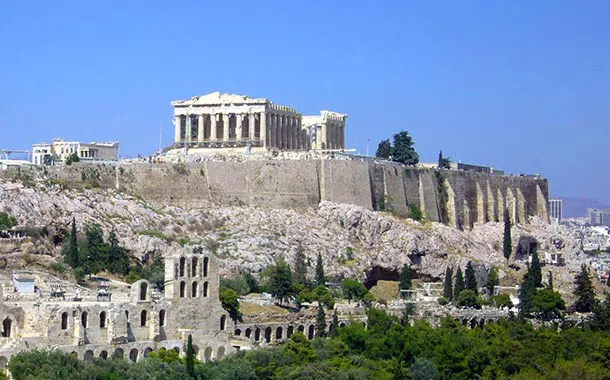
Athens
For many, Athens is a city lived two thousand five hundred years ago. Symbol is the mighty Acropolis which dominates almost every view and itinerary of every visitor, crowned by the iconic Parthenon, stands above the city, watching the sprawling modern metropolis in evolution.
Athens, the capital of Greece, is a city where antiquity and modernity, history and contemporary culture blend in a unique way. Everyone knows that the name of the city derives from the ancient Greek goddess of wisdom and justice. However, few people actually know the legend behind this event. According to myth, Athena and Poseidon, the God of the seas, vied for the right to name the city. Poseidon, to impress the inhabitants, gave them water, while Athena gave them an olive branch.
At first the choice fell on Poseidon, since the citizens considered water the most precious gift. When, once they tasted the water, they discovered that it was salty and not drinkable, they changed their minds and recognized Athena as their patron. One of the most famous historical sites in the city is the Acropolis, a majestic hill topped by ancient Doric temples, including the Parthenon, built in 477 BC. and the Erechtheion, built between 421 and 406 BC. Climbing the Acropolis, tourists can enjoy a breathtaking view of the city and the Aegean Sea. However, Athens is not only history, but also a lively cultural capital. In the Plaka district, located at the foot of the Acropolis, it is possible to stroll through the welcoming streets, visit the traditional Greek taverns and enjoy the authentic atmosphere.
Then there are the numerous cultural activities offered by the numerous museums, galleries and theaters present in the city. Athens is an important port for cruise ships that offer trips to the Mediterranean and beyond. Cruises from Athens allow guests to explore the rich cultural heritage of Greece, including the islands of Crete, Santorini and Mykonos, where you can admire the crystal clear waters of the Aegean Sea and a coast of white houses.
In addition to the Greek islands, cruises from Athens also offer the opportunity to visit other exciting Mediterranean destinations, including historic cities in Italy, Croatia and Turkey. Athens is therefore not only the historical and cultural center of Greece, but also an important starting point for cruises in the Mediterranean, which offers guests the opportunity to immerse themselves in the great history and splendid landscapes of this unique region.
Many still think of Athens as an ancient city that thrived two and a half thousand years ago. Its symbol is the mighty Acropolis, which dominates almost every view and the itinerary of every visitor, and it is crowned by the iconic Parthenon, which rises above the city, overlooking the sprawling and evolving modern metropolis.
Perhaps the most significant change is in the historical centre, which is almost unrecognisable since cars have been banned. This has liberated the area with the most significant archaeological sites, creating the longest, and undoubtedly one of the most splendid, pedestrianised zones in Europe. This huge archaeological park has brought past and present together, returning the cultural and social life of the city to the area around the ancient monuments and surrounding neighbourhoods.
Athens remains a city of contradictions; it is both frustrating and seductive. It is the oldest city in Europe, yet still in a state of transition. It is one of the safest and most vibrant European cities - an intoxicating mix of grunge and grace with an undeniably urban soul.
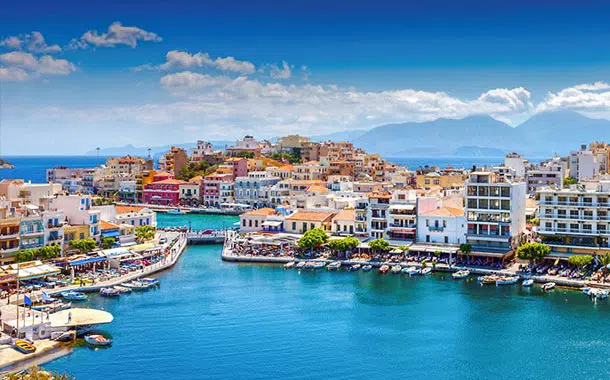
Itea
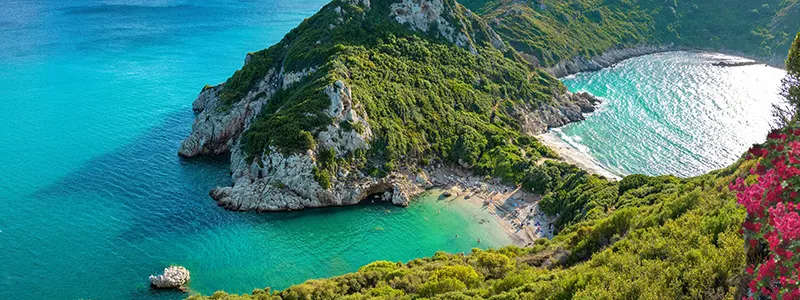
Korfu
Corfù is a Greek island in the Ionian Sea, located off the northwestern coast of Greece and south of Albania. The Greek island is a natural paradise. It is the second largest island of Greece, with 220 km of coastline. Its geography is dominated by mountain ranges and reaching 1000 meters above sea level, you will find Mont Pantokrator.
This mountain divides the island into three different areas. The northern area, abundant in olive groves, features green valleys and coastlines that form both small and large bays. The central part, the most populous and important, is covered by dense vegetation and lush hills.
The southern area consists of a large plain with less vegetation than the other regions but is decidedly more fertile. The most lively part of the city is found at Liston, similar to Paris’ Rue de Rivoli- a grand avenue lined with beautiful cafes and excellent restaurants. On the other hand, the island also has beautiful beaches washed by the Ionian Sea.
One of the most beautiful walks in the capital is along the harbor promenade, next to the city walls, where you can contemplate the view of the city. Corfù was the first Greek Island to open its doors to tourism, becoming an important international tourist centre that attracts many visitors every year. Even if tourism is evident in the coastal areas, the island has managed to preserve its authenticity.
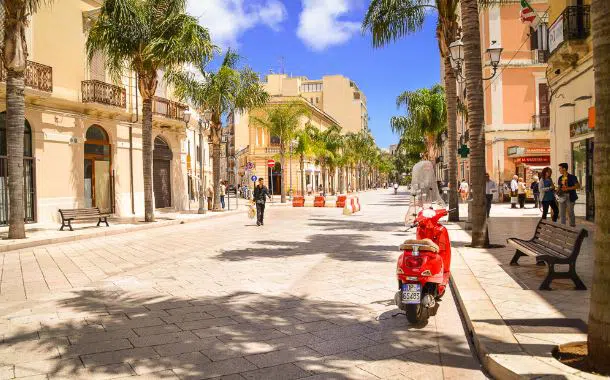
Brindisi
Many cruise ships, whose destination are Greek Islands, Croatia and Venice, set sail from Bari. On Taoticket you will find all departures on offer from Brindisi for a fairytale cruise in the Adriatic Sea.
Located in Salento plain along the Adriatic Sea, Brindisi has a magnificent natural port. The province of Brindisi stretches from the coast to the Adriatic Sea and includes areas of great historical interest. For instance, Via Traiana, the eastern part of the Itria Valley or the Roman road of Via Appia, the oldest road of the Roman Empire. In addition, Greece, Turkey and Albania can be easily reached from Brindisi by sea. The main trade traffic concerns coal, fuel oil, natural gas and chemicals.
If your cruise ship sets sail from Brindisi, do not miss the opportunity to visit this beautiful city in Puglia. We recommend you to visit the church of San Benedetto with its bell tower in Apulian Romanesque style, built around 1090 for the Benedictine nuns of Salento.
Do not a performance of the traditional dance of these lands: the pizzica. Its origins date back to the the cult of tarantismo, the belief that some women suffering from hysteria had been bitten by a tarantula. The only way to recover was to dance the pizzica continuously for days accompanied by the rhythm of tambourines, violins and mandolins. Nowadays pizzica is often still danced by young and old locals. There are many shows and artistic events you can attend, especially in the summer months. The traditional cuisine of Brindisi is made up of peasant elements such as barley flour and rich in blue fish, once undervalued but very nutritious. Stop here and try the famous fish soup with a glass of Negroamaro and your cruise will be tastier.
Brindisi: A Historical Gateway to the EastSet sail from Brindisi, a city in Puglia, Italy, steeped in history and serving as an ancient gateway to the East. With its Roman columns, charming waterfront, and historical churches, Brindisi offers a captivating starting point for your cruise. Explore its rich past, enjoy fresh seafood, and soak in the laid-back Southern Italian atmosphere before embarking on a journey across the Adriatic and Ionian seas. This vibrant port is your perfect introduction to a world of maritime adventure and cultural discovery.
Unveiling New Horizons from BrindisiCruises departing from Brindisi invite you to explore diverse and enchanting destinations, from the sun-kissed islands of Greece to the picturesque coasts of Albania and Montenegro. Whether you seek ancient historical sites, bustling markets, or tranquil beaches, Brindisi provides excellent access to a variety of compelling itineraries. Enjoy the convenience of a well-located port and the anticipation of new discoveries as you leave the heel of Italy behind for unforgettable experiences on the open water, promising relaxation and endless exploration.
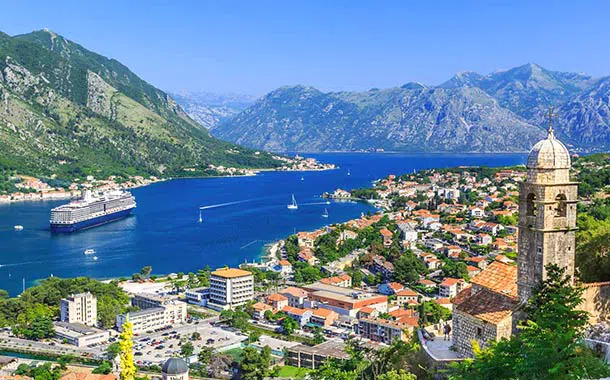
Kotor
The Adriatic Sea penetrates the jagged coast of Montenegro and winds between high mountains until it meets the exquisite and walled medieval city of Kotor.
Along the Adriatic coast of the former Yugoslavia, we find one of the most unique and fascinating European coastal areas, the city hidden in Montenegro, Kotor.
Located at the bottom of a bay, the beautiful medieval city of Kotor is considered a Mediterranean location surrounded by cliffs and an interesting historic wall. The tourist attractions of Kotor are easily reached with a pleasant walk. This small walled city, declared a UNESCO World Heritage Site, has compact dimensions that make it comfortable and easy to visit.
The central part of Kotor was built between the XII and XIV centuries. A historic center surrounded by a rather thick wall, four and a half kilometers long and fifteen meters high. This immense fortified wall reaches the bastion of Sveti Ivan (San Giovanni).
Inside the walls, it preserves an urban network cut into the stone. Its most emblematic work is the Cathedral of San Trifone, built in the 12th century. Inside the church it contains objects and frescoes sculpted during the 14th century. Furthermore, The Orthodox Church of San Nicolas, built between 1902 and 1909 in neo-Byzantine style and that of San Luca (13th century) built in Romanesque and Byzantine style.
Together with the churches, the city includes many palaces that tell its history: the Maritime Museum, located in the Grgurina Palace, a splendid baroque building located in the historic center of the country. The Drago house, with its beautiful Gothic windows, the Prima building, where Renaissance and Baroque lines are combined, the Ducal Palace and the Bizanti, both from the 17th century and the Napoleonic theater in the 19th century.
In Kotor, it is very common to see locals located along the rocky coast in the lower part of the city. In the old part of the area you will find many shops and restaurants that will delight your eyes. This location is the classic ideal city to spend quiet days or for a romantic getaway.
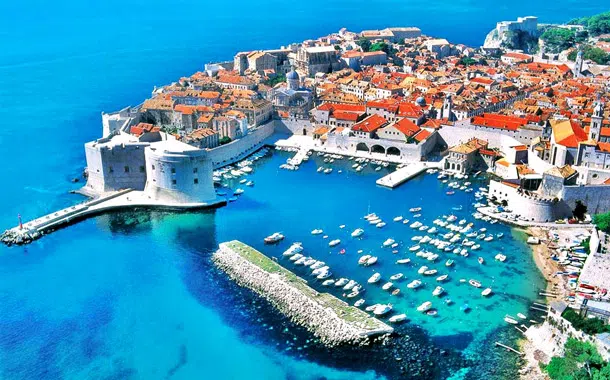
Dubrovnik
Dubrovnik is definitely special. A magnificent curtain wall surrounds marble streets and Baroque buildings exude a pearly light in the Adriatic sun.
Picturesque and artistic, Dubrovnik is a tourist hotspot and port in southern Dalmatia, at the foot of the Srđ mountain. From a historical and cultural point of view, it has been included in the list of UNESCO World Heritage Sites.
Thanks to its beauty and everything it has on offer for tourists, Dubrovnik is one of the most attractive destinations in the Mediterranean, so much so that the city can be visited all year round. In addition to its world-famous architectural heritage, this place has beautiful rocky beaches, pebble beaches and sandy beaches, enjoys a Mediterranean climate and also has lush vegetation. The main pedestrian street, Placa, is a melange of cafes and shops with monuments at each end.
Churches, monasteries and museums adorned with finely carved stone, recall an eventful history and a rich artistic tradition. Beyond the city there is a paradise of beaches, wooded peninsulas and a crystal-clear sea dotted with lush islands.
The city is also known for its delicious cuisine and its infrastructure of hotels for tourists. The city offers a wide selection of first-class restaurants, numerous sport and leisure activities, as well as cultural and entertainment events
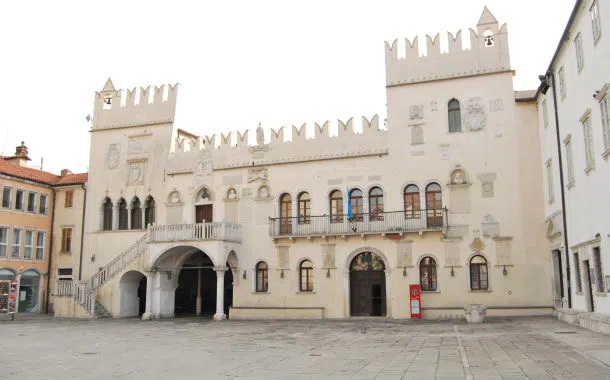
Koper
Koper (in Slovenian Koper, in Croatian Kopar, in German Gafers) is a city in Slovenia with 24,864 inhabitants, the capital of the Municipality of Koper (53,322 inhabitants) and the country's main port; it overlooks the Adriatic Sea. Among the main places of interest in Koper are the Praetorian Palace from the 15th century, in Venetian Gothic style, the Carmine Rotunda church from the 12th century, and the cathedral of San Nazario with its bell tower (55 m) from the 14th century. Koper is a bishopric with the Diocese of Koper, a suffragan of the Archdiocese of Ljubljana.
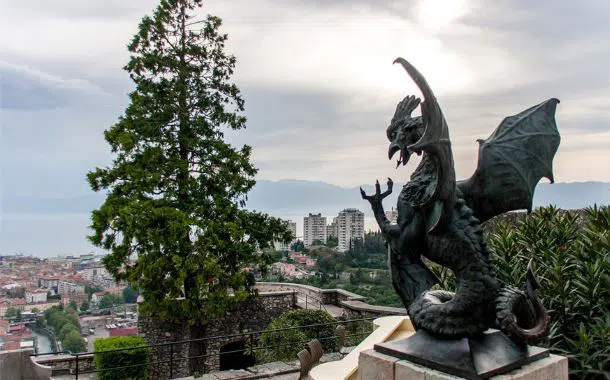
Rijeka
Rijeka is a Croatian seaport and city located in the Gulf of Kvarner, on the Adriatic coast. It is the third largest city in the country.
Before being annexed to the Yugoslav Republic in the twentieth century, it underwent Austro-Hungarian and later Italian dominations at the end of the nineteenth century. Today, the country has an excellent shipbuilding industry.
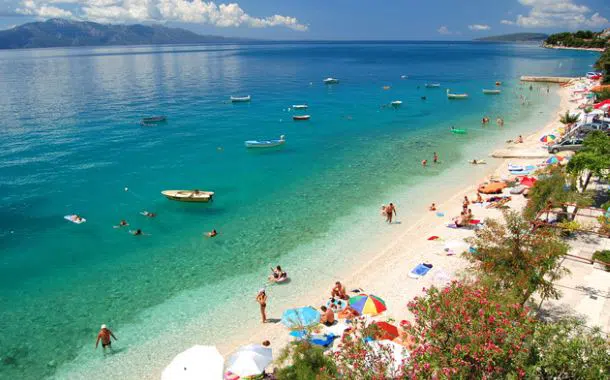
Zadar
Thanks to its geographical position, its beaches and attractive environment Zadar is an ideal destination for visiting the Dalmatia. Icing on the cake: the sunset would be the best in the world according to Alfred
Hitchcock.
Regional capital of northern Dalmatia, Zadar is a small coastal city in Croatia protected by lots of islands of the Kornati archipelago, one of the largest in the Mediterranean. If you want to enjoy your stay in this enchanting country, May, June and September are the most ideal times. A peaceful atmosphere is emanated from this ancient walled city. Surrounded by the sea and numerous pebble beaches, in the territory there are many national parks, in particular the most notably are the Plitvice Lakes, the Krka waterfalls and Velibit Mountain. Even after getting to know the city, you can admire the islands of the Kornati National Park, where you will find a labyrinth of untouched oases. This blessed place of the gods is ideal for diving and snorkling.
The surprising feature of Zadar: it is the only city in the world with a
marine 'organ', the waves produce a sound similar to the instrument used in the church. This is a further reason to discover this city rich in history and full of charm. This island has been inhabitaed for more that three decades, this is testifyed by its magnificent historical and archelogist ruins for example the 9th century monastery of San Donato, the 16th century Venetian bastions or the Porta della Terraferma, both Venetian. The central arch is decorated with a statue of St Chrysogonus, the patron saint of the city, these are just some of the places to visit. If you also plan to have fun, you will find several summer cultural events here, including Zara of Dreams or the musical nights of San Donato. For party-goers, we recommend one of the most famous clubs in Croatia, the Hacienda, which always hosts famous DJs and it is located between Zadar and Šibenik. While for liquors lovers, especially local ones, you can enjoy a typical local Maraschino in the evening.
The capital of Dalmatia, Zadar, is a small coastal city, located in Croatia and protected by numerous islands of the Kornati archipelago, one of the largest in the Mediterranean. If you want to enjoy your stay in this enchanting country, May, June, and September are the most ideal period. In this ancient walled city emanates a peaceful atmosphere. Surrounded by the sea and numerous pebble beaches, the territory has various national parks, in particular, the Plitvice Lakes, the Krka waterfalls, or the Velibit mountain. Even after knowing the city, you can contemplate the islands of the Kornati National Park, where you will find a labyrinth of pristine oases. This place blessed by the gods is ideal for diving and snorkeling. The striking feature of Zadar: it is the only city in the world with a "sea organ", the waves produce a sound similar to that of the instrument used in the church. One more reason to discover this coastal city rich in history and full of charm. This region has been inhabited for more than three millennia, as evidenced by the magnificent historical and archaeological finds. The monastery of San Donato of the 9th century, the Venetian bastions of the 16th century or the Porta della Terraferma, also Venetian. The central arch is decorated with a statue of San Crisogono, patron saint of the city, these are just some of the places to visit. If you also plan to have fun, here you will find several summer cultural events including Zadar of Dreams or the musical nights of San Donato. For partygoers, we recommend one of the most famous clubs in Croatia, Hacienda which always hosts well-known DJs, is located between Zadar and Sibenik. While for lovers of liqueurs, especially the local ones, in the evening you can enjoy a Maraschino typical of the area.

Kotor
The Adriatic Sea penetrates the jagged coast of Montenegro and winds between high mountains until it meets the exquisite and walled medieval city of Kotor.
Along the Adriatic coast of the former Yugoslavia, we find one of the most unique and fascinating European coastal areas, the city hidden in Montenegro, Kotor.
Located at the bottom of a bay, the beautiful medieval city of Kotor is considered a Mediterranean location surrounded by cliffs and an interesting historic wall. The tourist attractions of Kotor are easily reached with a pleasant walk. This small walled city, declared a UNESCO World Heritage Site, has compact dimensions that make it comfortable and easy to visit.
The central part of Kotor was built between the XII and XIV centuries. A historic center surrounded by a rather thick wall, four and a half kilometers long and fifteen meters high. This immense fortified wall reaches the bastion of Sveti Ivan (San Giovanni).
Inside the walls, it preserves an urban network cut into the stone. Its most emblematic work is the Cathedral of San Trifone, built in the 12th century. Inside the church it contains objects and frescoes sculpted during the 14th century. Furthermore, The Orthodox Church of San Nicolas, built between 1902 and 1909 in neo-Byzantine style and that of San Luca (13th century) built in Romanesque and Byzantine style.
Together with the churches, the city includes many palaces that tell its history: the Maritime Museum, located in the Grgurina Palace, a splendid baroque building located in the historic center of the country. The Drago house, with its beautiful Gothic windows, the Prima building, where Renaissance and Baroque lines are combined, the Ducal Palace and the Bizanti, both from the 17th century and the Napoleonic theater in the 19th century.
In Kotor, it is very common to see locals located along the rocky coast in the lower part of the city. In the old part of the area you will find many shops and restaurants that will delight your eyes. This location is the classic ideal city to spend quiet days or for a romantic getaway.

Dubrovnik
Dubrovnik is definitely special. A magnificent curtain wall surrounds marble streets and Baroque buildings exude a pearly light in the Adriatic sun.
Picturesque and artistic, Dubrovnik is a tourist hotspot and port in southern Dalmatia, at the foot of the Srđ mountain. From a historical and cultural point of view, it has been included in the list of UNESCO World Heritage Sites.
Thanks to its beauty and everything it has on offer for tourists, Dubrovnik is one of the most attractive destinations in the Mediterranean, so much so that the city can be visited all year round. In addition to its world-famous architectural heritage, this place has beautiful rocky beaches, pebble beaches and sandy beaches, enjoys a Mediterranean climate and also has lush vegetation. The main pedestrian street, Placa, is a melange of cafes and shops with monuments at each end.
Churches, monasteries and museums adorned with finely carved stone, recall an eventful history and a rich artistic tradition. Beyond the city there is a paradise of beaches, wooded peninsulas and a crystal-clear sea dotted with lush islands.
The city is also known for its delicious cuisine and its infrastructure of hotels for tourists. The city offers a wide selection of first-class restaurants, numerous sport and leisure activities, as well as cultural and entertainment events
